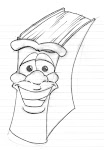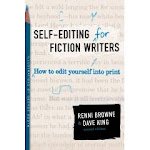
We all know how important the right decision is. The more important it is, the more time we take to process all the information we know that concerns that decision. Your character has reacted to the last scene's disaster. He has realized his dilemma of not knowing what to do next. After weighing all his options, he now makes a decision. And, yes, this is a very important decision!
Be sure to make your character proactive, that he actually makes the decision and that one is not forced on him (making him passive and not as interesting). Give him options, but don't make any of them easy. The more risky the decision, the more intensely involved is the reader. This is another way to raise the tension.
However, be sure that the decision is workable, even if the percentages are small (otherwise, you paint yourself into a corner). Now the reader is forced to turn the page to see if the decision is the right one and if it will work.
Remember:

*Goal
*Conflict
3 parts to a Sequel
*Reaction
*Decision
Scene and Sequel work together to move your story forward. Next time I'll show you how to use Scene and Sequel in all types of fiction.
Visit AnAuthor World's website (www.anauthorworld.com) for information on our fall writing conference, The Story Continues. It will be Saturday, October 15, 2011, at Furman University, 3300 Poinsett Highway, Greenville, SC. If you have questions about the conference or just writing questions in general, feel free to contact me at pam at anauthorworld dot com.












No comments:
Post a Comment